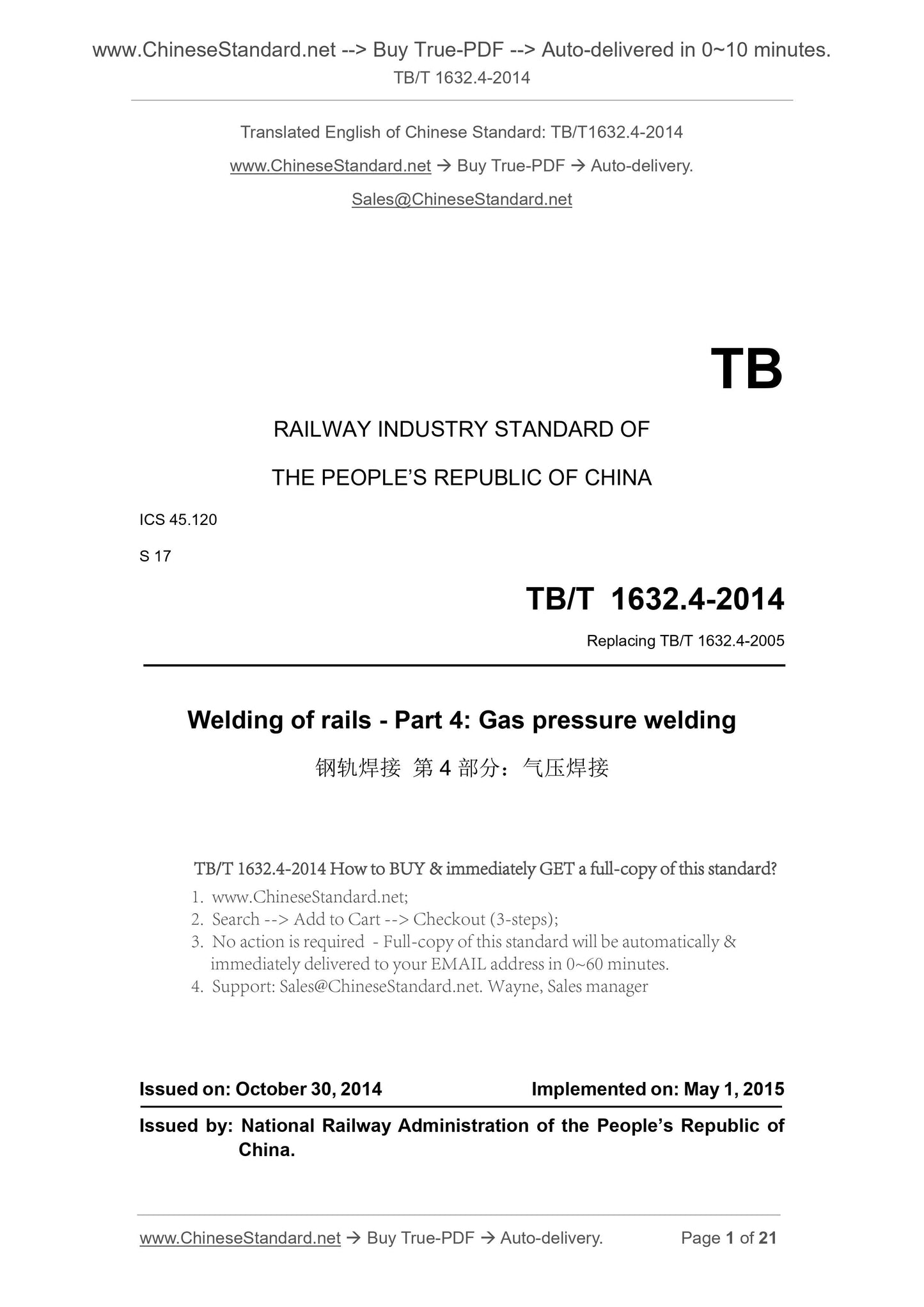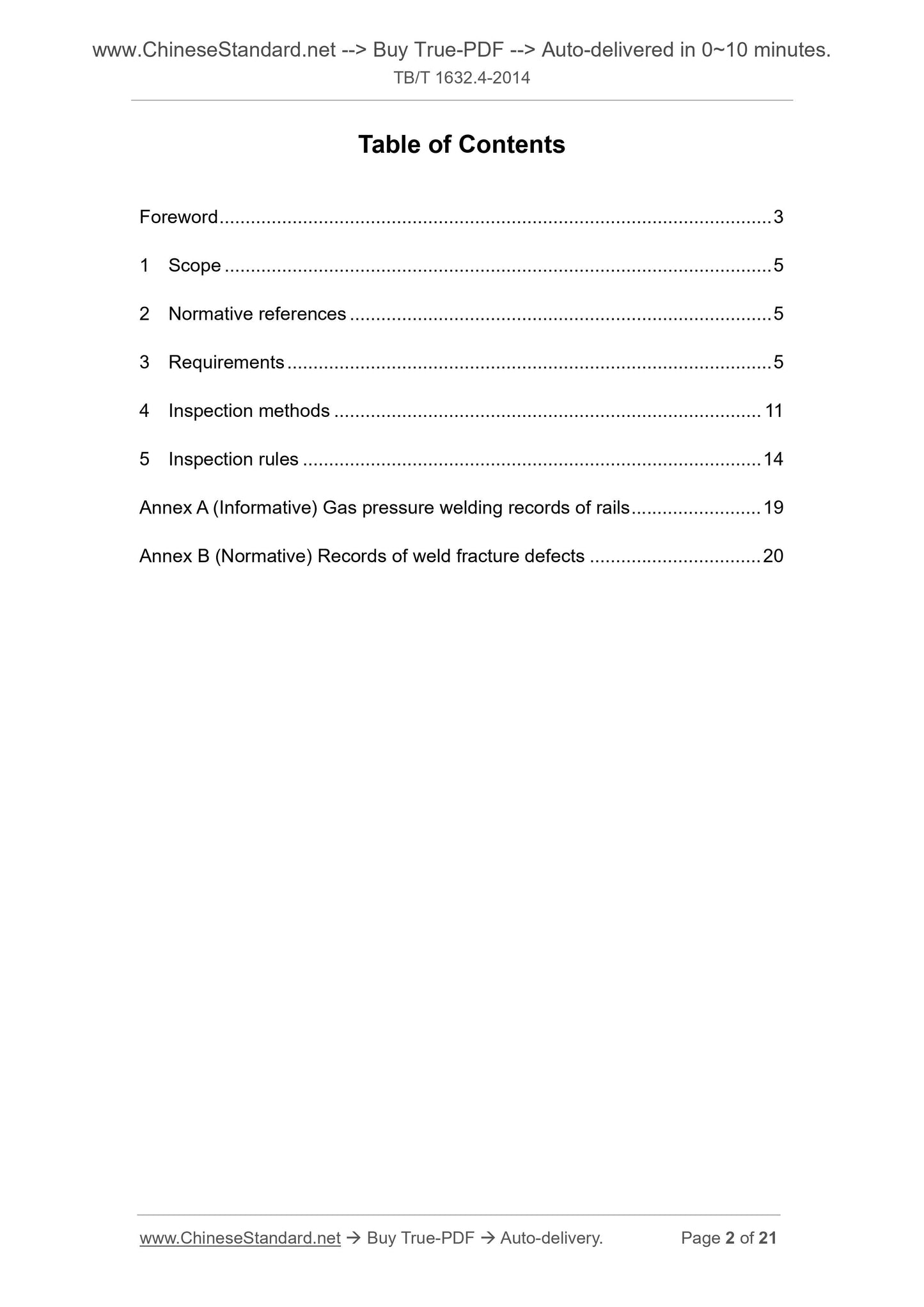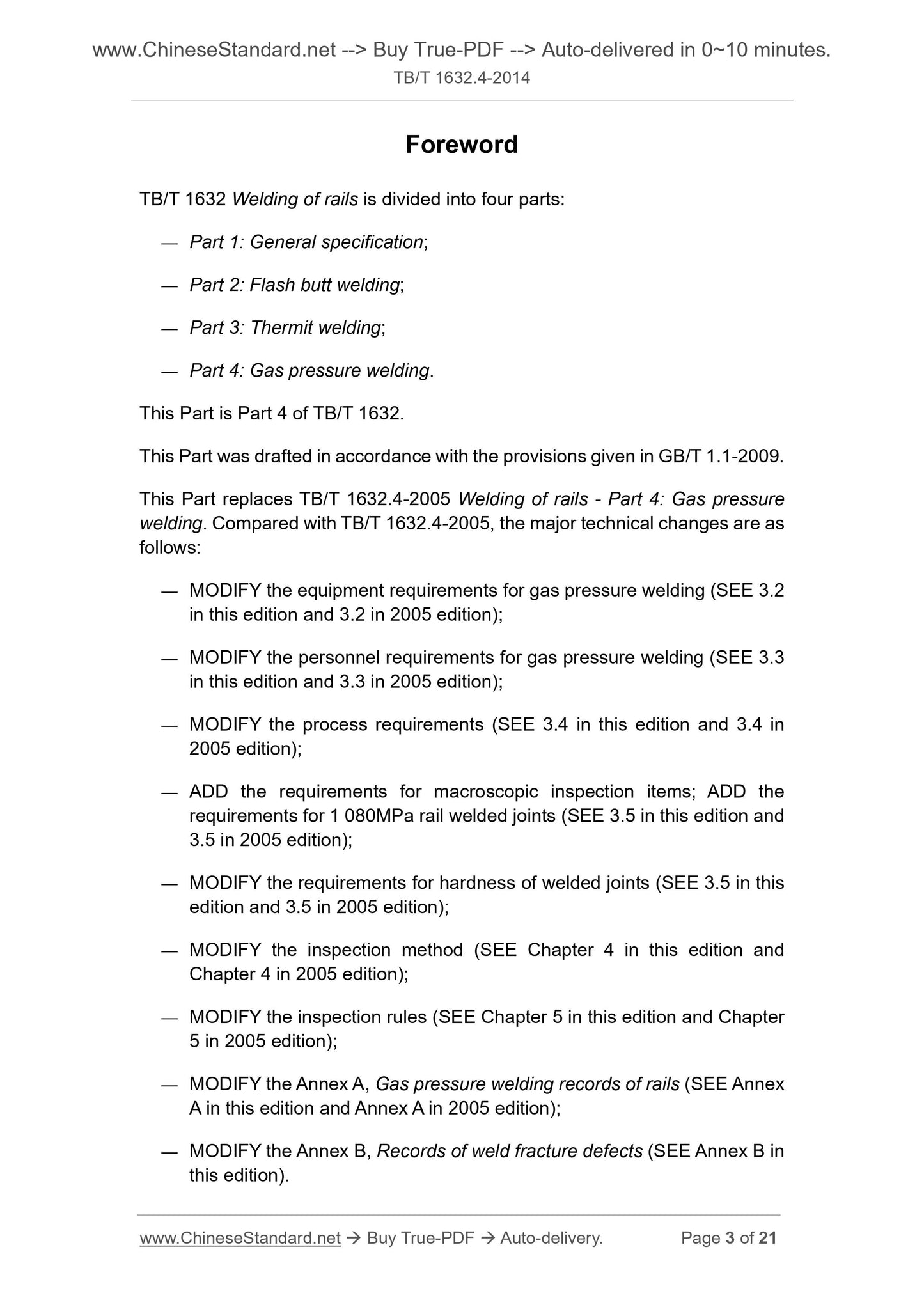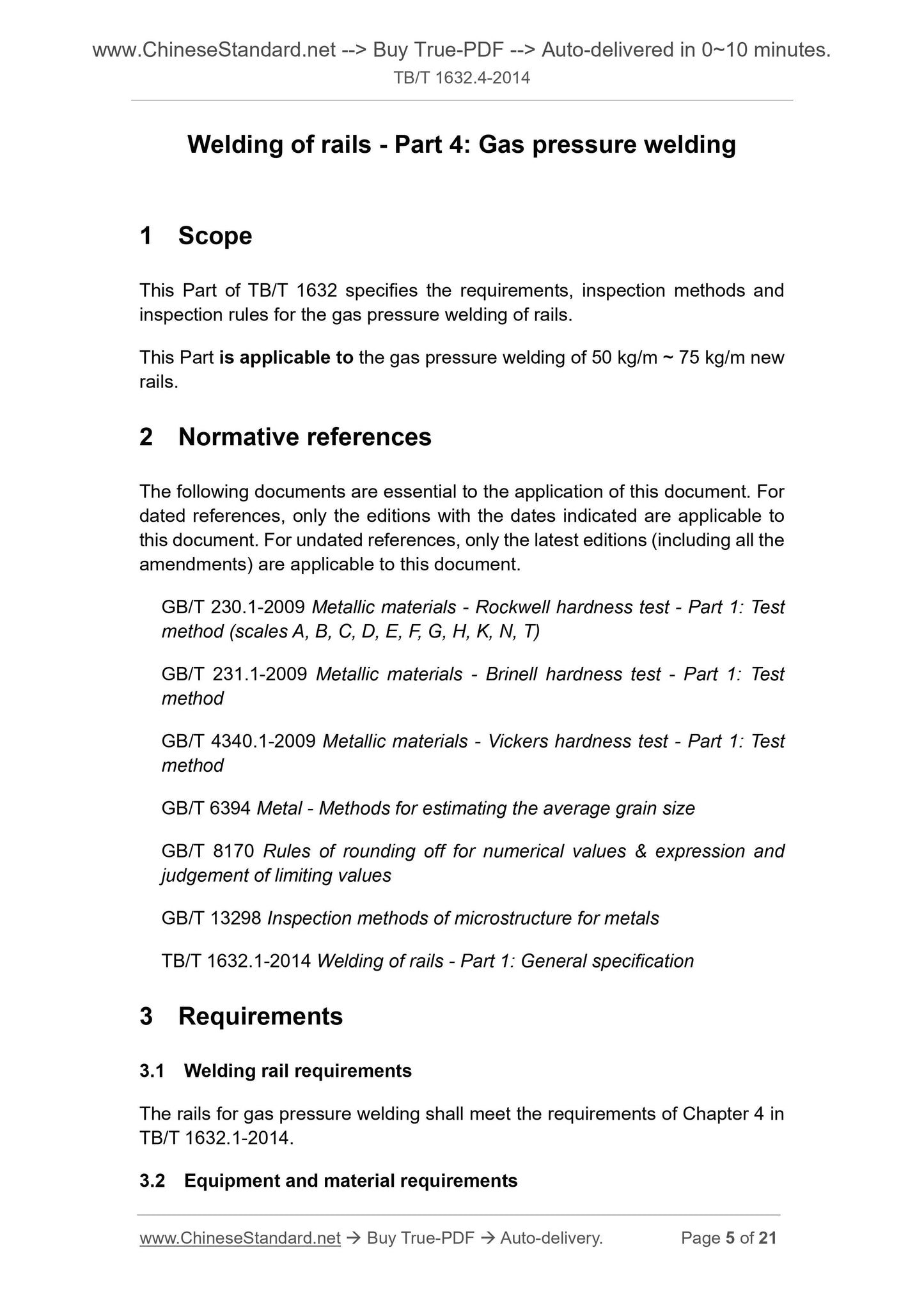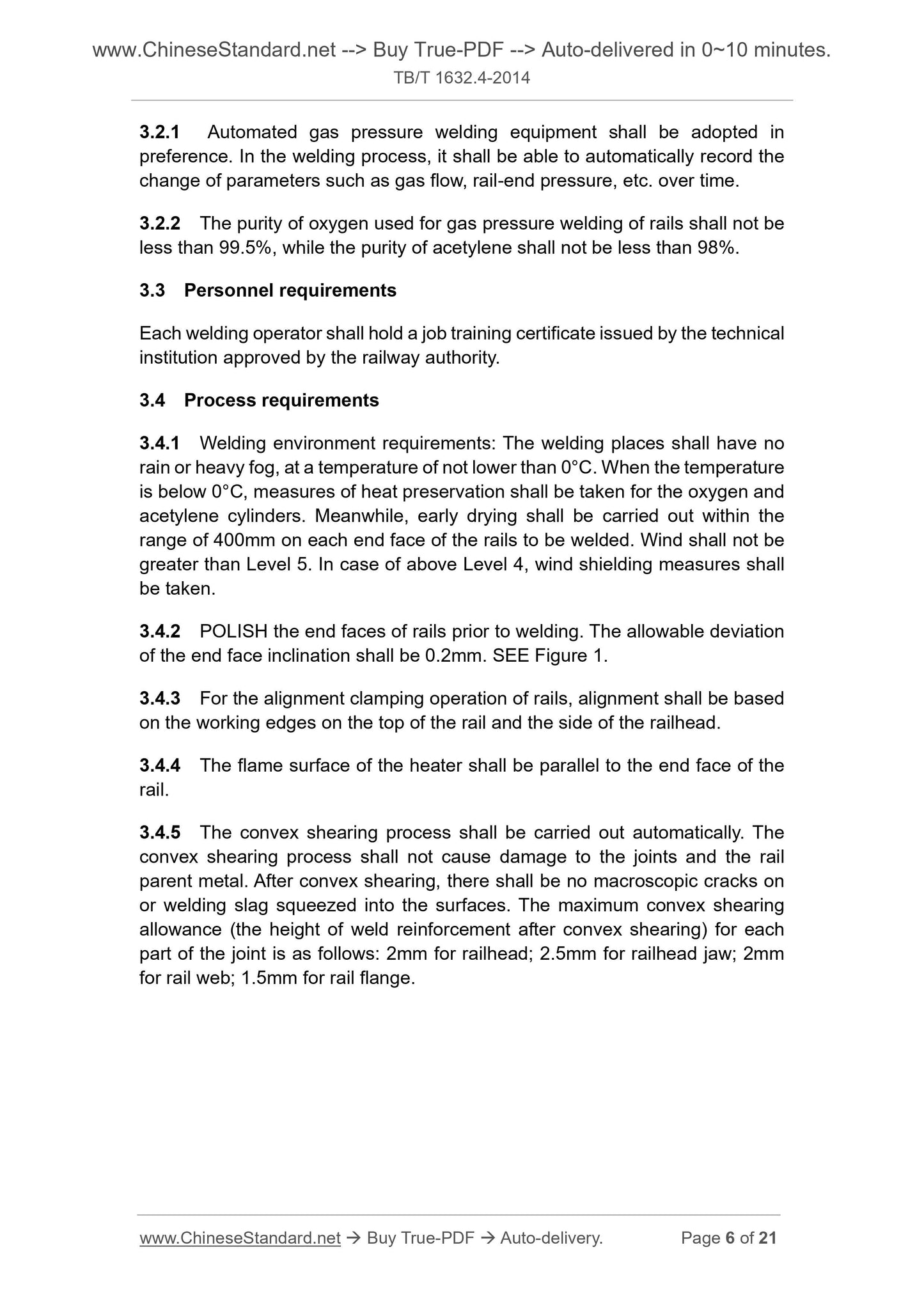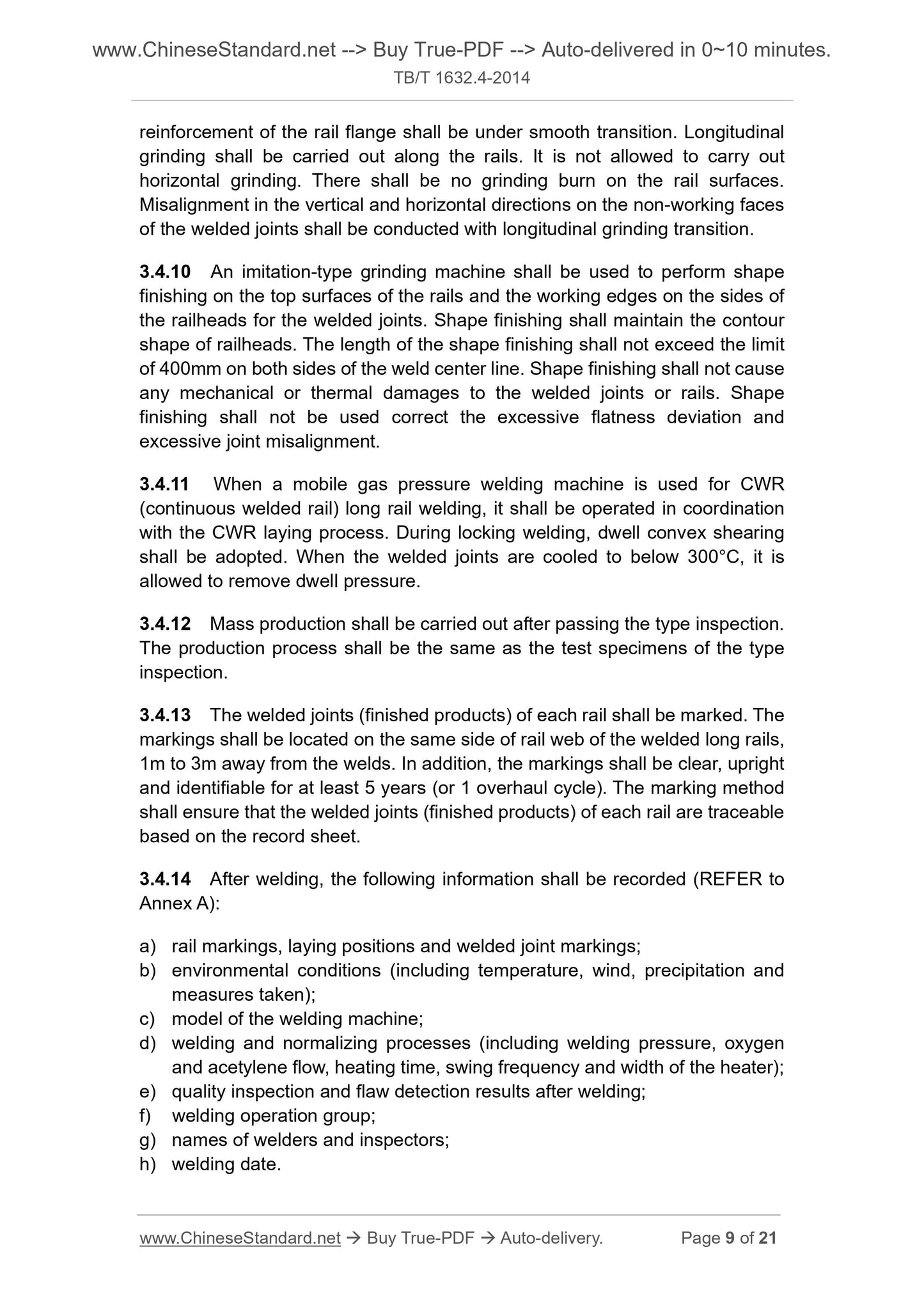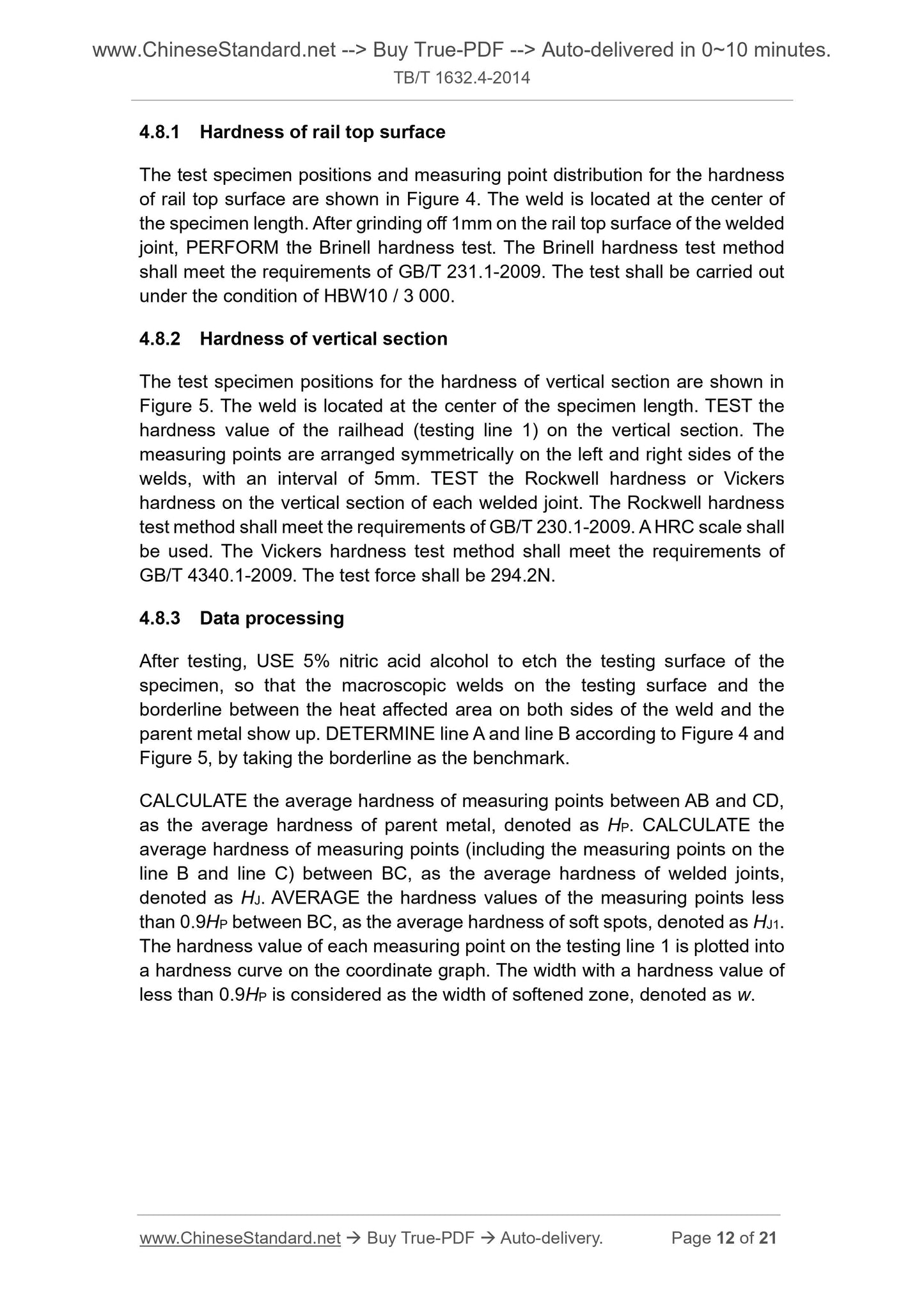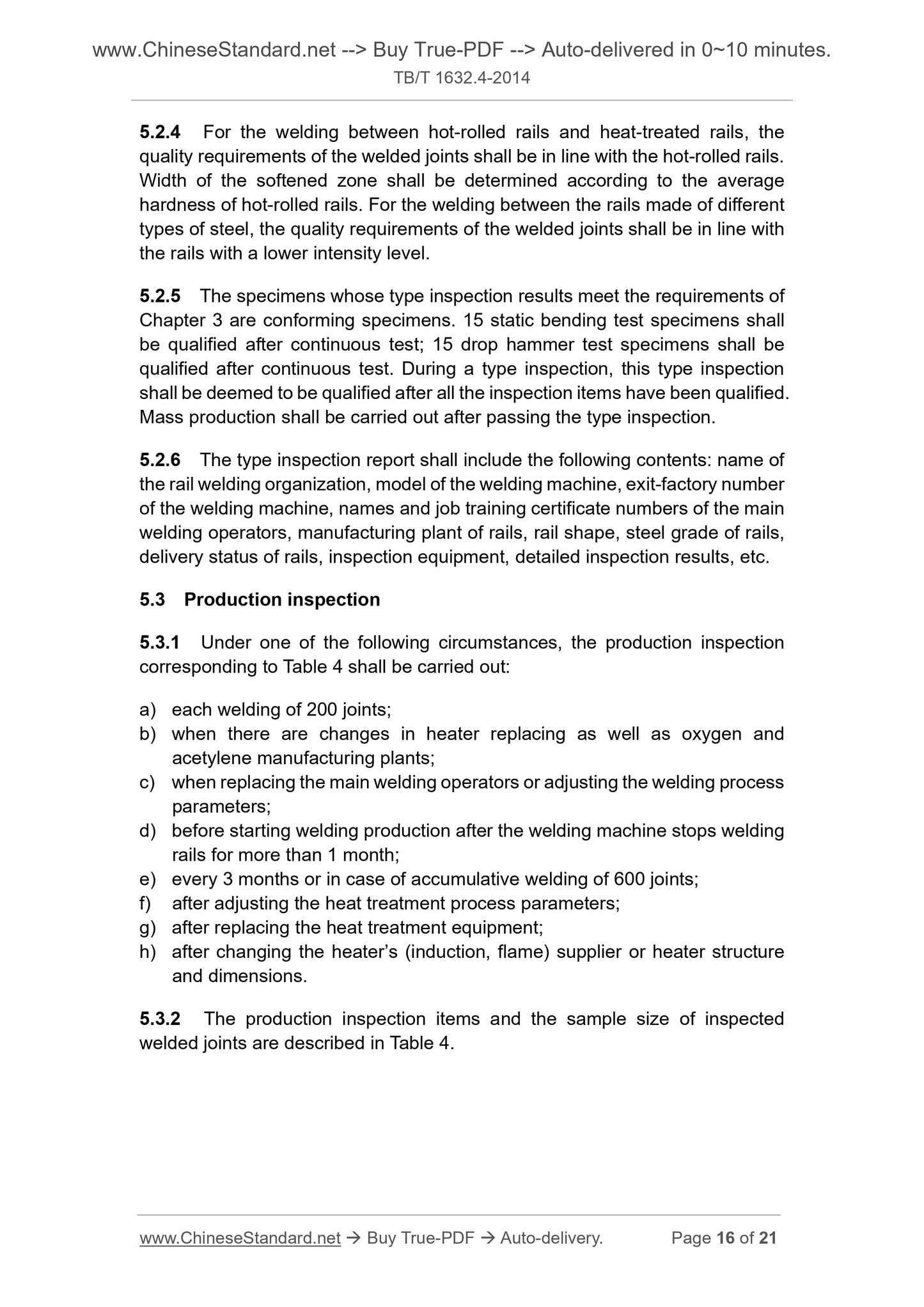1
/
of
8
www.ChineseStandard.us -- Field Test Asia Pte. Ltd.
TB/T 1632.4-2014 English PDF (TB/T1632.4-2014)
TB/T 1632.4-2014 English PDF (TB/T1632.4-2014)
Regular price
$135.00
Regular price
Sale price
$135.00
Unit price
/
per
Shipping calculated at checkout.
Couldn't load pickup availability
TB/T 1632.4-2014: Welding of rails - Part 4: Gas pressure welding
Delivery: 9 seconds. Download (and Email) true-PDF + Invoice.Get Quotation: Click TB/T 1632.4-2014 (Self-service in 1-minute)
Newer / historical versions: TB/T 1632.4-2014
Preview True-PDF
Scope
This Part of TB/T 1632 specifies the requirements, inspection methods andinspection rules for the gas pressure welding of rails.
This Part is applicable to the gas pressure welding of 50 kg/m ~ 75 kg/m new
rails.
Basic Data
| Standard ID | TB/T 1632.4-2014 (TB/T1632.4-2014) |
| Description (Translated English) | Welding of rails - Part 4: Gas pressure welding |
| Sector / Industry | Railway and Train Industry Standard (Recommended) |
| Classification of Chinese Standard | S17 |
| Classification of International Standard | 45.120 |
| Word Count Estimation | 16,124 |
| Date of Issue | 10/30/2014 |
| Date of Implementation | 5/1/2015 |
| Older Standard (superseded by this standard) | TB/T 1632.4-2005 |
| Regulation (derived from) | State-Railway-Science-Regulations [2014] 55 |
| Issuing agency(ies) | National Railway Administration |
Share
